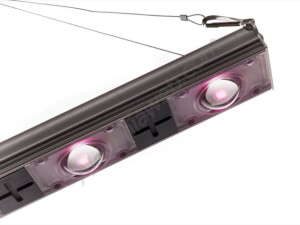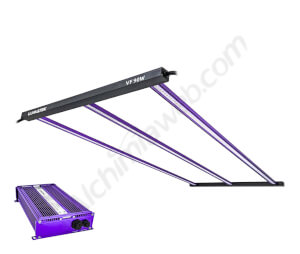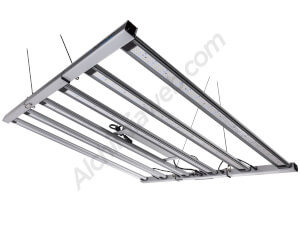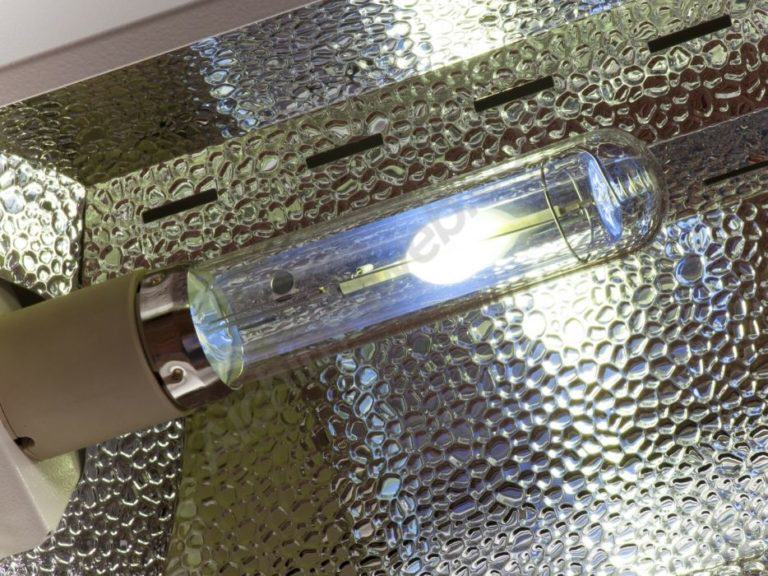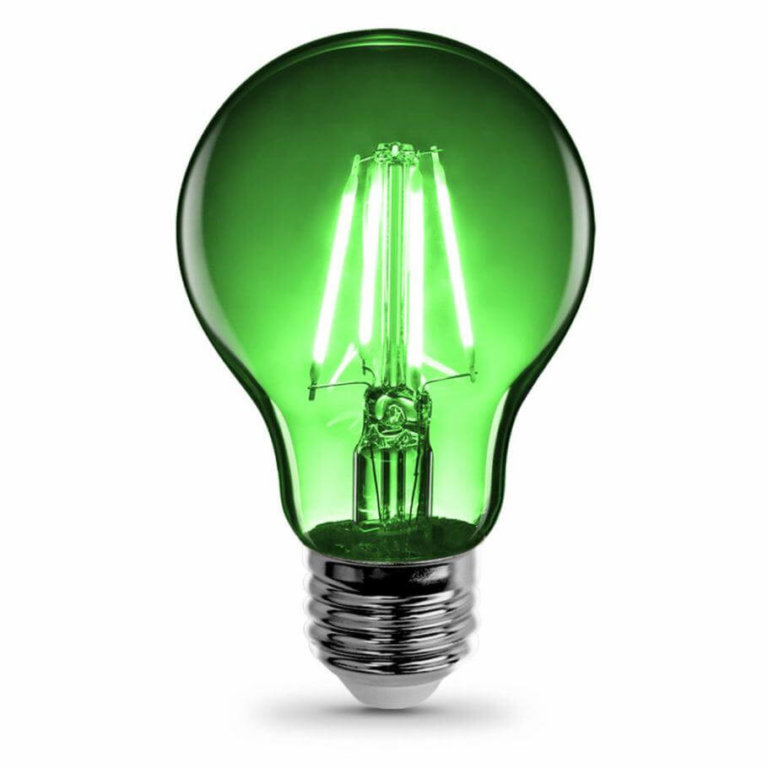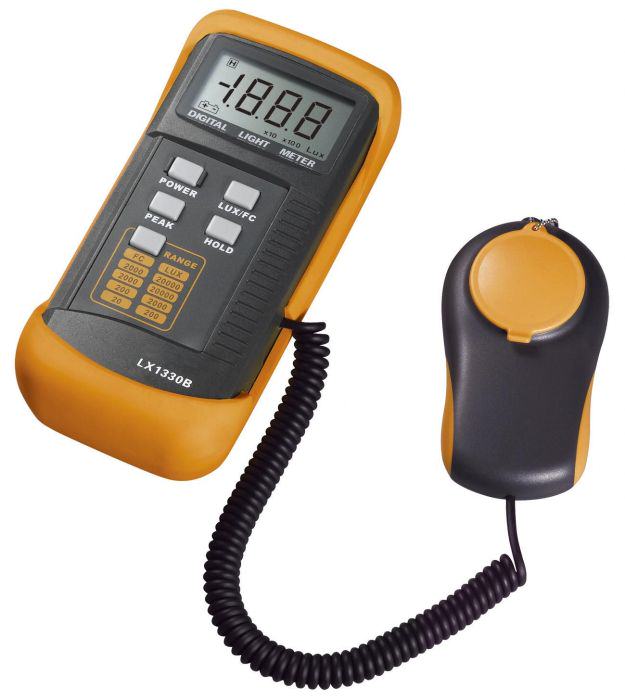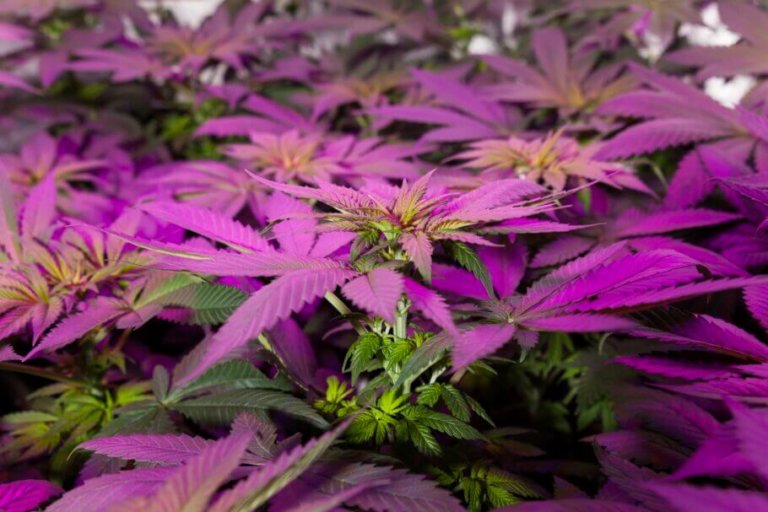Types of grow lights for indoor cannabis cultivation
List of contents
How do we light our cannabis growing space?
When we decide to set up an indoor cannabis grow for personal use at home, there are many factors to take into account if we want to get the best results, but one of the most important to consider is the type of light and its power consumption.
When deciding on the type of light to use, we must keep in mind that each technology has its different advantages and disadvantages with respect to growing cannabis. Certain types of bulbs will offer the best yield (lumen per watt) but at the same time they are a considerable heat source that can cause problems to many growers, especially those that live in particularly warm climates or are only able to grow cannabis in small spaces.
On the contrary, other types of illumination emit almost no heat at all, although often the high price of this kind of lighting, combined with its lower effectiveness when compared to other systems, combine to make them less popular. They are, however, indispensable to the many indoor growers that can only cultivate cannabis successfully thanks to the low heat emission of these lights.
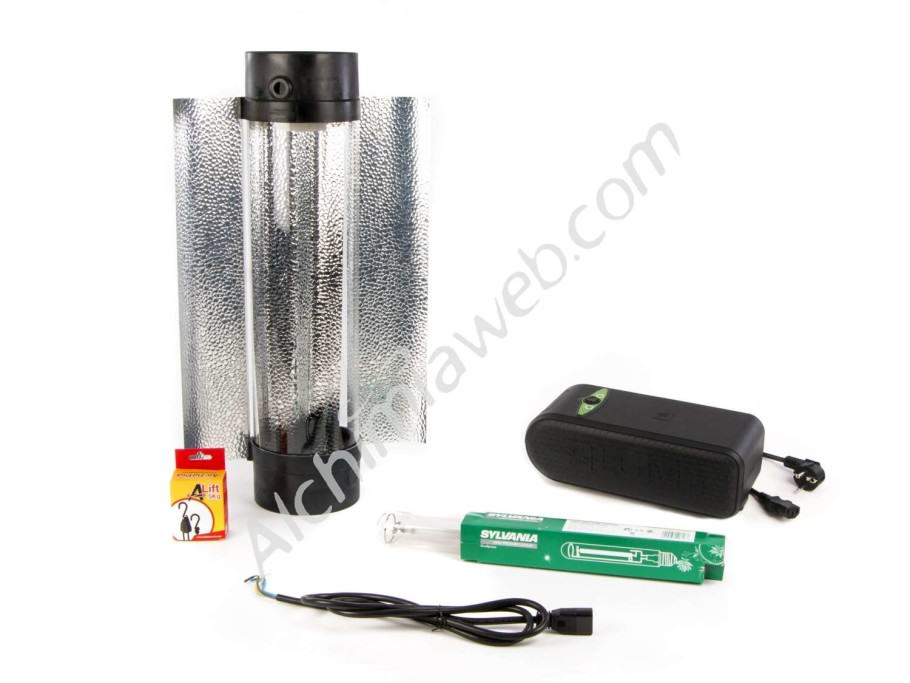
The choice of lighting systems for indoor growing mainly depends on the stage of life that the plant finds itself in (rooting/seedling, vegetative growth or flowering), which will dictate the light spectrum and intensity that is required. As we've mentioned, the available grow space also has an influence on this decision because certain lamps will emit too much heat to be used in reduced areas, as is often the case with HPS or MH lights.
The correct light spectrum for cannabis plants
When it comes to the to the colour temperature of the light spectrum, cannabis plants will benefit from receiving blue light (450-500nm) during their vegetative growth stage, and red light (610-750nm) during the flowering period.
When rooting clones and in the first stage of starting seedlings, many growers use simple fluorescent tubes or CFL lightbulbs with a blue spectrum. For plant growth and pre-flowering, many will begin to use lights with the same spectrum, but with greater power, such as Metal Halide lamps. This encourages the structure of the plant become stronger and hardier, preparing her for abundant flowering.
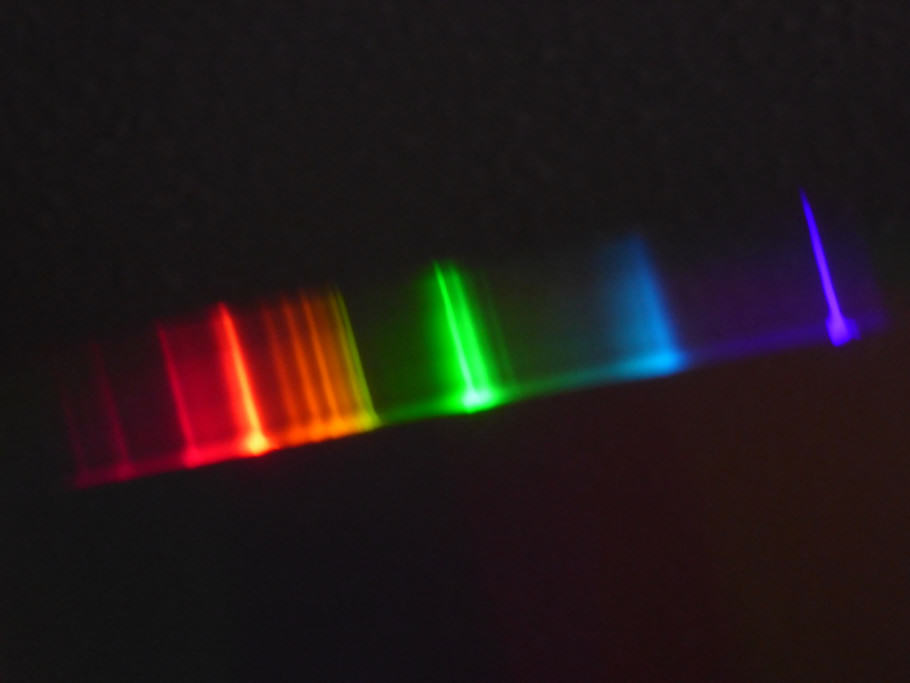
Red spectrum lights are used for flowering cannabis plants, as this is the colour range that best imitates the spectrum of sunlight during the autumn months, when outdoor cannabis is naturally in flower. In this case the most commonly used are HPS lamps, increasingly followed by LED systems due to their good results, lower energy consumption and most significantly, lower heat emission, which is the main problem with high pressure sodium systems (HPS).
On the contrary, most green light is reflected by the leaves and therefore has no effect on cannabis plants, making it the perfect colour spectrum to choose when growers want to work on their flowering plants with the lights off, without disrupting the dark period and stressing them.
Lighting systems for cannabis plants
Fluorescent and CFL lights
As we've seen, this is the ideal type of light for rooting cuttings and sprouting seeds, and the low intensity needed during these phases, coupled with their low power consumption and heat emission make them perfect for this purpose. We can find classic lighting systems using fluorescent tubes or CLF energy-saving light-bulbs (compact fluorescent light), which are lightbulb-shaped fluorescent lights with the typical base for bulb-sockets. The CFL's have built-in ballast, so you just have to screw them to the reflector and plug it in. Normally, the fluorescent tubes vary from 18w and 55w, while CFL?s are often found in 100w, 125w, 200w and 250w (also available with red spectrum, ideal for the flowering phase).
You can read our blog post about growing cannabis plants with CFL lights to learn more about this kind of lighting.
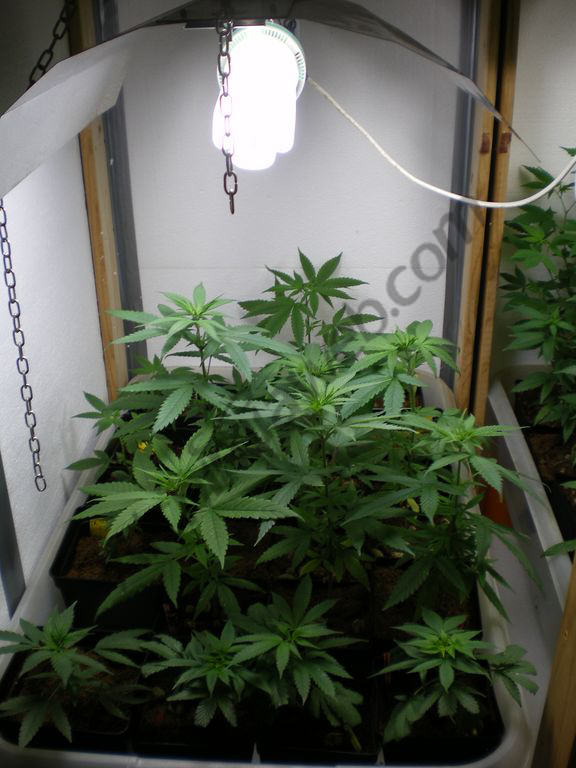
Metal Halide or MH lights
If we want explosive plant growth during the vegetative phase, then Metal Halide lights are one of the best options. Their spectrum is perfect for this stage and we can find lamps with much greater intensity than fluorescent and CFL lights. This type of lightbulb needs a ballast to operate, which often are compatible with both MH and high-pressure sodium or HPS, the bulbs most commonly used for the flowering stage. If you are going to use the same ballast for growth and flowering phase, you must take the wattage into account. Therefore you must use, for example, bulbs of 400w with ballasts of 400w, and so on. These lamps are most commonly found in 250, 400, and 600w.
Metal Halide lamps also offer excellent results during the pre-flowering phase (first 2-3 weeks of flowering) because their light spectrum helps to prevent stretching when compared with HPS lighting, creating plants with a more stocky structure, perfect for abundant flowering.
High-pressure sodium or HPS lights
To talk about HPS lighting is to talk about the most popular lamps in any flowering space, although in recent years LED panels have been gaining ground gradually. We can find HPS mixed light (dual spectrum), used both in growth and flowering, or specific for this last phase. Traditionally it has been said that it's the kind of light that offers the best overall performance, although its main problem is its heat emission and that its spectrum is not at all adequate for proper growth. To reduce the heat it radiates, many growers use a cool tube reflector, or air-cooled reflectors that are connected to the extractor, diminishing the room temperature a few degrees. Normally, you can find them of 250W, 400W, 600W, and 1000W, being those of 600W the best in spaces of more than one square meter (1,5 m2 approximately).
Our blog post about SOG growing will give you a clear idea of how to flower plants with HPS lights.
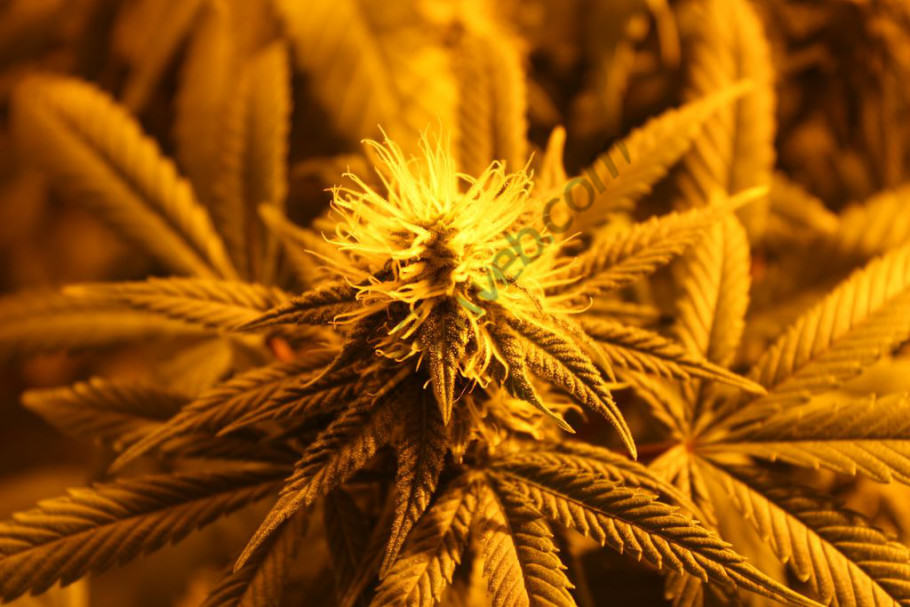
CMH LEC grow lights
Ceramic metal halide lamps (or light-emitting ceramic) are the newest type of grow light to hit the market. With improved light spectrum, lamps like Lumatek Aurora 315w CMH LEC are becoming increasingly popular thanks to their superior features and higher yields, representing a more professional option than conventional HPS systems. You'll find both 3100K and 4200K bulbs, as well as different fixtures: 315W, 630W Double Ended, 2x315W...
One of the main novelties with regard to this type of lamp is the new design and materials: the traditional quartz piece inside the bulb has been replaced with a ceramic component, which provides a much wider light spectrum and thus increases the performance of plants. Both color stability and representation are better with these lamps, which, moreover, are also more efficient than MH/HPS systems in terms of power consumption.
LED Panels and cannabis
LED lights (Light Emitting Diode) are becoming increasingly popular among homegrown cannabis cultivators as they provide similar results to HPS lights but with lower power consumption and heat emission. These lighting systems have greatly improved over recent years, and now offer results that were unthinkable just a short while ago. Their main disadvantage is the cost of the light, and although it is quickly recouped in the monthly electricity bill thanks to their energy-saving consumption, the initial investment is out of the reach of many pockets.
A great advantage of LED lighting is that it barely generates any heat, so there's no need for powerful air extractors in our cultivation space, even if it's a grow tent or a small room, and we may even have to provide the room with a little extra heat in the coldest months of the year, employing heat mats, heating cables, etc. There is a wide range of LED lights with different power usage available on the market, from 90w up to 280w, and even higher.
Elsewhere on the Alchimia blog you can check out a grow report of a crop cultivated with LED panel lights which will help to guide you in the practical usage of these illumination systems.
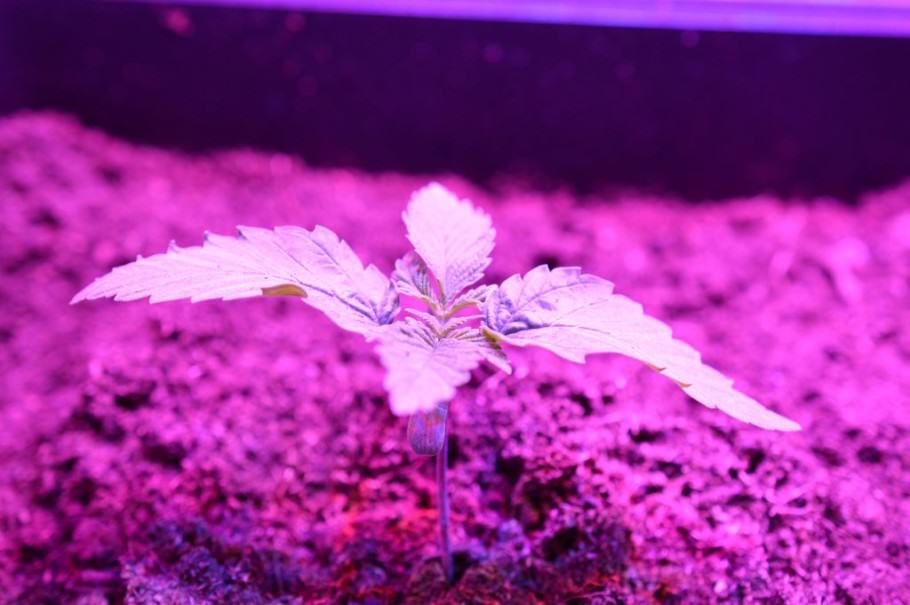
UV light and cannabis resin
The use of ultraviolet light in Cannabis cultivation has been experimented with for a long time. According to one of the most commonly accepted theories, cannabis produces resin or trichomes in order to protect itself against the high light intensity and solar UV rays emitted by the sun. Given that the lights used in indoor gardens don't emit UV rays, it's believed that by combining the classic light bulbs with UV lamps, we can increase both production of resin, (cannabinoids, terpenes, etc. ) and strengthen the plants. Some growers also contend that it speeds up the ripening process of the trichomes. Even so, most of the trials carried out have lacked the appropriate scientific rigor, so it would be premature to guarantee their results in indoor cannabis cultivation.
If you wish to experiment with this type of light, keep in mind that they must be UVB rays (not UVA) and of low intensity. These rays can cause skin cancer and serious damage to the eyes, so we recommend extreme caution in their use.
UV light and cannabis
The use of ultraviolet light in cannabis cultivation is increasingly common, especially in large commercial facilities. Today we tell you what uses UV light can be used for, what differentiates the different types of ultraviolet light and what precautions should be taken when using it. You will see that it can be much more useful than it seems!
Plasma lamps for growing cannabis plants
For some time, there has been talk of plasma lighting systems or HEP (High Efficiency Plasma). Although they offer higher efficiency than HPS lights, they have various disadvantages that mean they haven't often been used for growing cannabis: the light spectrum is unsuitable for productive flowering; they emit UVC rays (very harmful to health); the initial cost is high; they create a lot of heat; they can cause electromagnetic interference with electronic equipment, WiFi signals, etc. if not shielded.
Despite these drawbacks, the advantages of plasma lamps are considerable: bulbs are very long-lasting and retain light intensity over time; they offer a very broad light spectrum very close to natural light; they use less energy than HPS and MH lamps; and they offer great light penetration too. Indeed, some light manufacturers have recently developed next-generation LEP (Light Emitting Plasma) lamps which, although still expensive, are a much more interesting proposition than they were a few years ago, and definitely worth watching out for in the future.
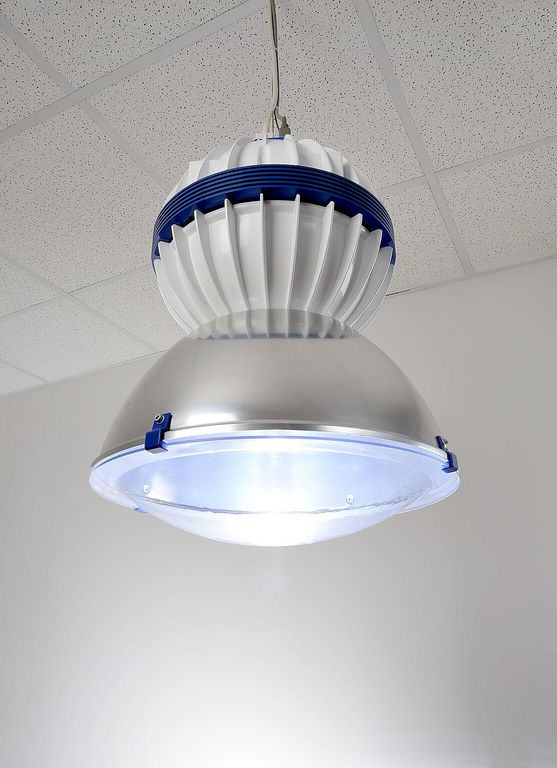
We hope that this post has been useful and has helped to clarify some basic concepts about illuminating your crops. If you have any further questions or doubts, feel free to leave a comment below and we'll do our best to answer.
Thanks and happy growing!

















































